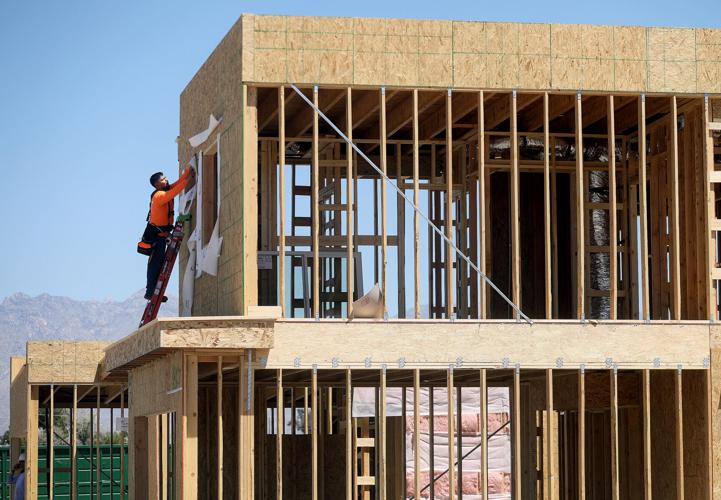One industry sector that has always been a bellwether for the economy is residential real estate. I recently spent time with David Godlewski, President/CEO of The Southern Arizona Homebuilders Association (SAHBA), to gain insight into TucsonŌĆÖs economic landscape through the lens of residential construction.
Founded in 1953, SAHBA is a trade organization representing members across all aspects of the residential home building industry, from large builders to small subcontractors.
SAHBA offers a wide array of services, including workforce development, government advocacy, learning, and networking.

The Southern Arizona Homebuilders Association, founded in 1953, is a trade organization that offers members a wide array of services.
What I discovered is that SAHBA goes beyond simply representing and serving home builders ŌĆö it advocates for the environment, partners with government and serves as a voice for an industry that enhances TucsonŌĆÖs competitiveness against similar-sized cities like Austin and Albuquerque.
People are also reading…
This nonprofit organization comprises 335 members serving the residential housing needs of Pima, Cochise, and Santa Cruz counties. SAHBA works closely with municipalities to foster growth through responsible, high-quality housing development.
Meeting environmental challenges
SAHBA members navigate increasing pressures from all sides to deliver high-quality, environmentally sound housing. These challenges include material costs, qualified personnel shortages and environmental and government regulations.
Living in the desert presents unique challenges regarding water consumption.
Pima County, in conjunction with the Sonoran Desert Conservation Plan, has implemented water conservation policies that significantly impact home builders.
Rather than resisting these policies, SAHBA and its members embrace them, believing they benefit both the environment and consumers.
Focusing on market-driven desires, home builders deliver construction that is energy efficient, particularly in water usage.
The Home Energy Rating System (HERS) Index measures a homeŌĆÖs energy efficiency, including water consumption. A score of 70 is considered energy efficient, with lower scores indicating greater efficiency. SAHBA members consistently and voluntarily build homes with HERS scores in the 50s, demonstrating their commitment to sustainability.
Economic indicators and growth
Assessing home building as an economic indicator for Tucson, Godlewski believes the industry is strong and growing. During the boom of 2005-2006, approximately 10,000 new homes were built annually. The housing crisis of 2008-2009 dramatically reduced this number to less than 2,000 per year.
Current demographics in Southern Arizona support building 5,000 to 5,500 new homes annually. In 2024, about 4,500 new homes were constructed, with expectations for 2025 to continue at this level ŌĆö a positive sign for the regional economy.
Cascading economic benefits
New home construction contributes to the economy in multiple ways beyond a single transaction. For example, businesses considering relocating to or launching operations in Tucson prioritize high-quality, abundant housing for their employees.
SAHBA members meet this demand through various subdivisions, from smaller infill projects with just a few homes to larger master planned communities with hundreds of homes. This expansion is evident in municipalities such as Marana, Vail and Sahuarita.
A new $450,000 home supports dozens of businesses during construction. Once occupied, homeowners use products and services from numerous local businesses, creating a multiplier effect throughout the community.
Workforce development
SAHBA also focuses on workforce development through collaborative programs with JTED, Pima Community College, and the Job Corps. These initiatives help develop the next generation of skilled workers for the home-building industry in Southern Arizona.
Passion for home industry shows
Passion for the new home building industry by Godlewski ŌĆö and by extension SAHBA ŌĆö is evident in the wide array of services and value they provide to members. It is also evident in their collaborative approach to working with all municipalities to support responsible growth.
SAHBAŌĆÖs greatest contribution, as the voice of homebuilding and residential development, is in jobs created, tax revenues, and all of the resulting economic growth that cascades from their efforts. One nonprofit organization helping to turbocharge an entire industry.













